
For many individuals, tea addiction goes beyond a simple appreciation for the beverage. It becomes a psychological and physiological dependence that is often difficult to overcome. The reasons behind this dependence can vary from person to person, but there are several common factors that contribute to the allure of tea. Firstly, the caffeine content in tea provides a natural stimulant that can be habit-forming. This, coupled with the sense of comfort and relaxation that tea offers, can create a powerful association between the drink and positive emotions. Additionally, tea-drinking rituals and traditions play a significant role in cultural and social contexts, further reinforcing the allure of tea as an integral part of daily life.
The psychological aspects of tea addiction cannot be overlooked. Many individuals turn to tea as a way to cope with stress, anxiety, or sadness. The act of making and drinking tea can be comforting and soothing, providing a temporary escape from the challenges of everyday life. Moreover, the sensory experience of tea, such as its aroma and taste, can invoke pleasurable sensations that contribute to the reliance on this beverage. It is crucial to understand these underlying factors in order to effectively address and overcome tea addiction.
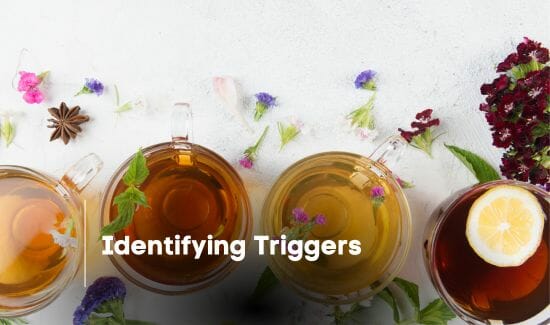
Identifying Triggers: Recognizing the Situations and Emotions that Drive Your Tea Cravings
Recognizing the triggers that drive our tea cravings can be a crucial step toward overcoming our addiction. Such triggers can vary from person to person, but common situations and emotions often play a significant role. For some, the morning routine of brewing a hot cup of tea becomes an automatic response, serving as a wake-up call and providing a sense of comfort and familiarity. Similarly, tea cravings may intensify during moments of stress or fatigue, as our bodies seek the stimulating and energy-boosting properties of caffeine. Understanding these situations and emotions that bring about the desire for tea can help us develop strategies to manage and eventually eliminate our dependence.
Situations that frequently coincide with our tea cravings can include specific times of the day, such as the mid-afternoon slump, where we may turn to tea for a quick pick-me-up. Alternatively, social gatherings that traditionally involve tea, like high tea or tea parties, can act as triggers that prompt cravings. Similarly, emotions like sadness, anxiety, or boredom can also trigger the desire for tea as a means to find solace or occupy ourselves. By identifying these situations and emotions, we become more aware of the circumstances in which our cravings arise, enabling us to devise alternative coping mechanisms and healthier habits to address them.
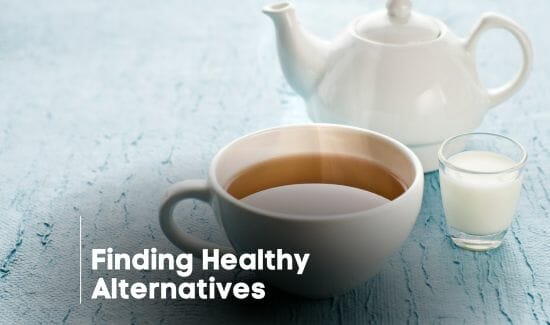
Finding Healthy Alternatives: Exploring Substitutes to Satisfy Your Cravings
When trying to overcome a tea addiction, finding healthy alternatives to satisfy your cravings is essential. It’s important to remember that replacing one habit with another is a natural part of the process. Instead of reaching for that hot cup of tea, you can opt for herbal teas or infusions. These can provide a similar sensory experience without the caffeine content. Additionally, incorporating other warm beverages into your routine, such as hot water with lemon or ginger, can help satisfy the ritualistic aspect of tea drinking. By exploring these substitutes, you can gradually reduce your dependence on tea while still enjoying a comforting drink.
While finding alternatives to tea may seem challenging at first, there are plenty of options to explore. Non-caffeinated options like chamomile, peppermint, or rooibos tea can provide a variety of flavors and health benefits. Herbal teas can be enjoyed hot or iced, providing a refreshing alternative to traditional tea. In addition to herbal teas, you can explore other warm beverages, such as hot cocoa or warm apple cider, which can provide the same sense of comfort and satisfaction. By trying out different substitutes, you can discover new flavors and rituals that can help ease your transition away from tea addiction.
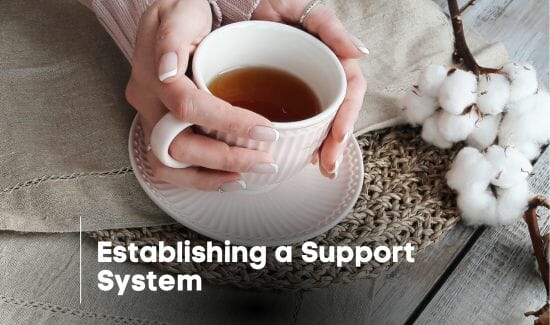
Establishing a Support System: Seeking Encouragement and Assistance from Friends and Family
It is important to recognize that overcoming any addiction requires a strong support system. Seeking encouragement and assistance from friends and family can play a crucial role in your journey of reducing and eliminating tea addiction. Sharing your struggles and goals with loved ones can help create a sense of accountability and provide emotional support during challenging times.
Your friends and family can offer valuable insights and advice, as they may have experienced similar struggles or have knowledge on how to navigate through addiction. By involving them in your process, you can gain a different perspective and have access to a pool of resources that can aid in your recovery. Moreover, having a support system can also serve as a reminder of the positive changes you are making, motivating you to stay committed to your goals. Remember, even a simple conversation or a kind gesture from someone who cares about you can make a world of difference in your journey towards breaking free from tea addiction.

Creating a New Routine: Developing Habits and Rituals that Don’t Revolve Around Tea Consumption
Developing new habits and rituals can be a crucial step in overcoming tea addiction and creating a healthy, tea-free lifestyle. By replacing old tea-related routines with fresh and engaging activities, you can break free from dependency and live a more balanced life. When embarking on this journey, it is important to focus on finding activities that bring you joy and fulfillment, helping you redirect your attention away from tea.
One effective strategy is to explore new hobbies or interests that capture your curiosity and passion. Engaging in activities such as painting, writing, or playing a musical instrument can provide a creative outlet and serve as a welcome distraction from tea cravings. Additionally, joining community groups or sports clubs can help you meet new people with shared interests and expand your social circle, further diminishing the void left by tea. By developing these new routines, you can establish a healthier mindset and gradually distance yourself from the grip of tea addiction.
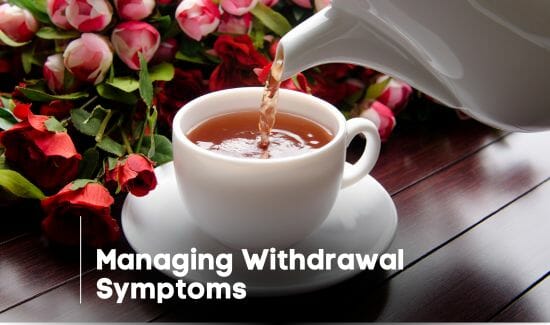
Managing Withdrawal Symptoms: Coping with the Physical and Emotional Challenges of Quitting Tea
Withdrawal symptoms can be one of the biggest hurdles to overcome when quitting tea. Both the physical and emotional challenges can make it difficult to stick to your tea-free journey. Physically, you may experience headaches, fatigue, and irritability as your body adjusts to the absence of caffeine. Emotionally, you might find yourself feeling anxious, restless, or even depressed. These symptoms can be intense, but it’s important to remember that they are temporary and a sign that your body is adjusting to a new way of functioning without the constant presence of tea. It’s helpful to stay hydrated with water and herbal teas, engage in regular exercise, and practice relaxation techniques such as deep breathing or meditation to support your physical and emotional well-being during this time.
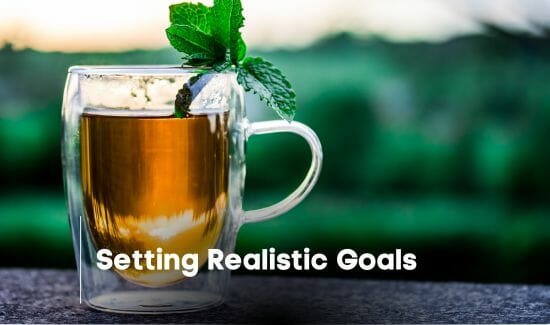
Setting Realistic Goals: Establishing Achievable Targets for Reducing and Eliminating Tea from Your Life
Setting realistic goals is an integral part of successfully reducing and eliminating tea from your life. It’s important to approach this process with a mindset that is both practical and attainable. Start by assessing your current tea consumption and determine a target goal that aligns with your desired outcome. For example, if you currently drink four cups of tea a day, aim to gradually reduce it to three cups in the first week. From there, you can further decrease your intake by setting incremental goals, such as reducing to two cups in the second week, and so on. By breaking down your overall objective into smaller, manageable steps, you increase your chances of long-term success.
Another crucial aspect of setting realistic goals in overcoming tea addiction is being mindful of your individual capabilities and limitations. Understand that your journey may be different from others, and that’s perfectly okay. It’s essential to evaluate what works best for you and design a plan that accommodates your unique circumstances. While it may be tempting to set aggressive goals, remember that sustainable progress is rooted in gradual change. Embrace the process and be adaptable if adjustments are needed along the way. With patience and determination, you can set achievable targets that will ultimately lead to reducing and eliminating tea from your life.
FAQs:
What are some common reasons behind tea addiction?
Some common reasons behind tea addiction include the need for caffeine, habit formation, stress relief, and using tea as a way to cope with emotions.
How can I identify the situations and emotions that trigger my tea cravings?
Pay close attention to when and why you reach for a cup of tea. Keep a journal and note down the situations, emotions, or events that precede your tea cravings. This will help you identify your triggers.
What are some healthy alternatives to satisfy tea cravings?
Some healthy alternatives to satisfy tea cravings include herbal teas, flavored water, decaffeinated tea, or natural fruit infusions. Experiment with different options to find what works best for you.
Is it better to gradually reduce tea intake or quit cold turkey?
Gradually reducing your tea intake is often more successful than quitting cold turkey. It allows your body and mind to adjust gradually, minimizing withdrawal symptoms and increasing your chances of long-term success.
How can I set realistic goals for reducing and eliminating tea from my life?
Start by setting small, achievable goals such as reducing tea consumption by one cup per day or limiting tea intake to specific times of the day. Gradually increase the goals as you build confidence and success.

As a dedicated blogger, I share insights, tips, and knowledge on all things caffeinated and beyond. I firmly believe that a well-brewed cup of coffee or a skillfully crafted cocktail has the power to unite people and ignite engaging conversations.


